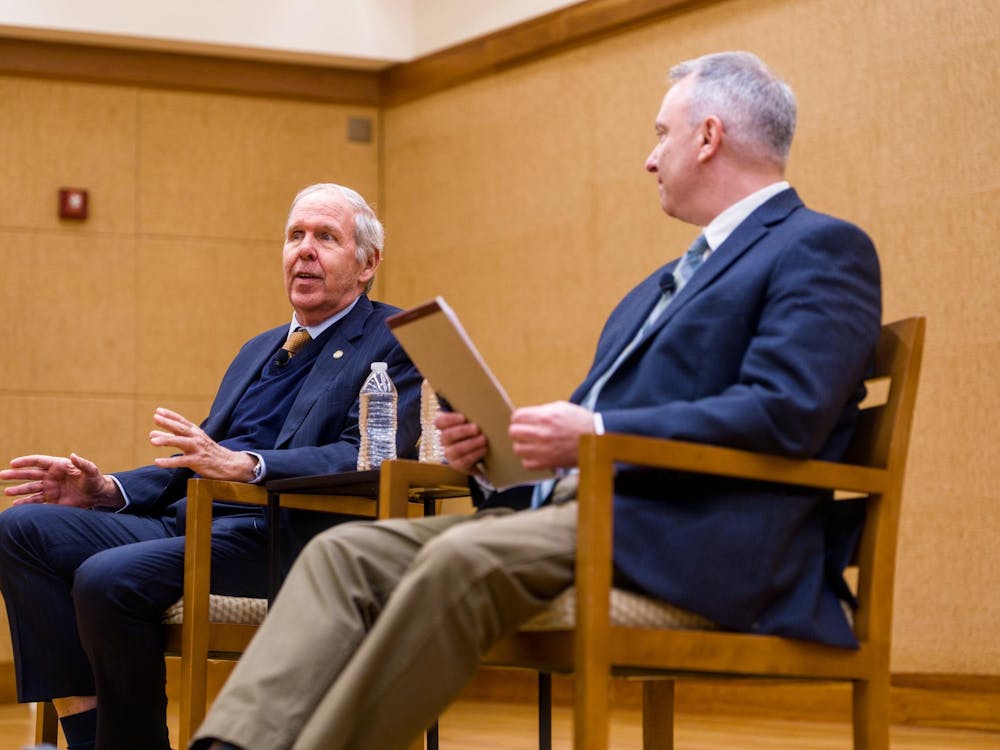Women now constitute 57 percent of college students nationally, according to data compiled by the Minnesota Office of Higher Education. Since the 1980s, women have outnumbered men, and the decline has been accelerating in recent years, with men continuing to dwindle as a proportion of college students.
Although there are slightly more women than men ages 18 to 24 in the United States -- an estimated 15 million to 14.2 million, according to the Census Bureau -- women have climbed to surpass men by greater numbers than ever before.
At the University, Dean of Undergraduate Admissions John A. Blackburn observed that in general males have higher SAT scores, but females make higher grades in tougher classes, including AP classes, because they tend to apply themselves more.
The gender gap between women and men also reflects trends in minority enrollment, which favors females.
"Population has a big impact," Blackburn said. "I think it reflects a change of the population in college students."
Blackburn said between 20 and 25 percent of African-American college students nationwide are male, and similar disparities hold true for Hispanic students.
"As the two become larger cohorts in college populations, these trends will continue," he added.
As the gender gap continues to widen, some colleges have begun to consider giving a type of affirmative action. Small colleges and universities frequently have more equal numbers of men and women, Blackburn said.
"This division is normally deliberate -- there is a special consideration given for some reason or another, such as preexisting male and female dorms," Blackburn said.
Blackburn emphasized, however, that the University will not begin this practice.
"At U.Va. we treat men and women equally in admission," he said. "We will absolutely not consider giving special attention to men."
Thomas G. Mortenson, a public policy analyst on higher education and publisher of the Postsecondary Education Opportunity newsletter, also said males should not be offered preferential treatment in admission over well-qualified females. Still, he said he is worried about the attention females receive for their perceived discrimination.
"What has come to concern me in the past few years, as I have become increasingly frustrated with the voids in the education system, is that the women's movement has seemed to suck up all the political oxygen, and there is no room for politicians to bring up the disadvantages of men," Mortenson said.
Mortenson also said he worries about the disappearance of jobs in farming and manufacturing as the economy of the United States switches to the service sector.
"The boys aren't getting the message that working in these sectors requires an education," Mortenson said.
Historically, there have been more men than women at the University until 1988. During the 1980s and 1990s, women increased by a few tenths of 1 percent. In the late 1990s, women reached 53 to 54 percent. This year women constitute 56 percent of the University population.
At the University, the College is 59 percent female. The School of Architecture is 56 percent female, the Education school is 87 percent female and the Nursing school 97 percent female. Females are minorities in the McIntire School, representing only 44 percent. The Engineering School is 25 percent female, according to the University's Data Digest.
Blackburn said the Engineering School actually exceeds the national average for engineering schools, which tend to have only a 10 to 15 percent population of women.
The University offered admission to almost equal proportions of males and females who applied for undergraduate admission. Fifty-one percent of males and 55 percent of females who were offered admission accepted, according to Blackburn.






